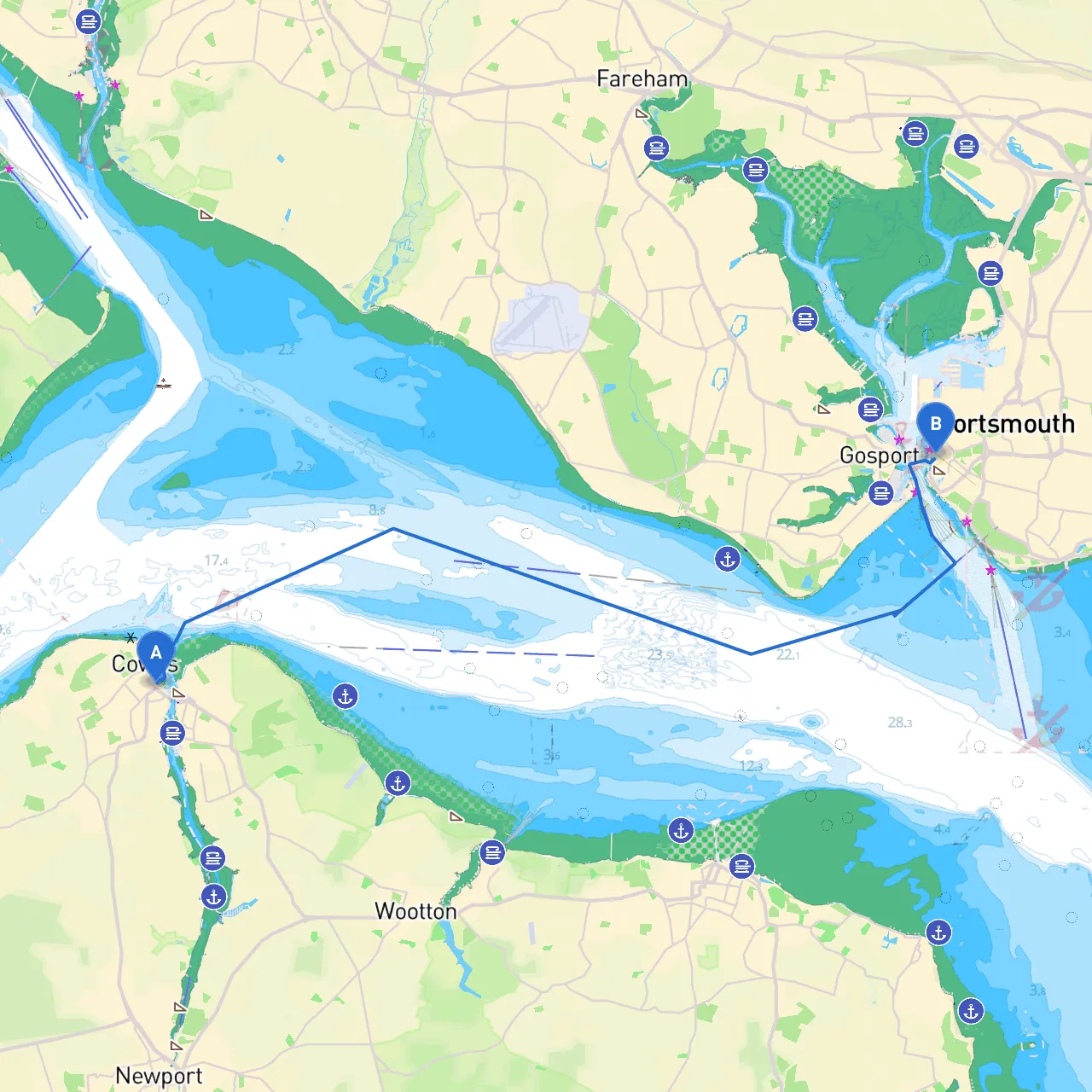

Pilotage Plan for the Trip from Cowes to Portsmouth
Route Overview:This journey from Cowes to Portsmouth will take you along the stunning waters of the Solent, a celebrated stretch of water known for its intricate navigation challenges and picturesque views. It’s ideal for experienced moderen sailors who enjoy a blend of open water sailing and coastal navigation, offering an exhilarating yet manageable experience. The distance you'll cover is approximately 13 nautical miles, making it a delightful day trip or a leisurely half-day sail.
Departure Point: Cowes, Isle of WightCowes is a lively yacht haven with a rich sailing history and numerous amenities. Before you set out, it’s wise to check the local weather forecasts and tide tables. The tides in the Solent can be quite strong, so knowing whether you are leaving on a flooding or ebbing tide is important for optimal conditions.
Section 1: Departure from Cowes
As you slip out of Cowes Harbour, take note of the navigation buoys marking the channel to the Solent. The entrance is quite busy, with ferries and leisure vessels, so maintain a lookout for other traffic. Use your charts and GPS for precise navigation while keeping clear of the Cowes Breakwater, marked by its prominent lighthouse.
Shelters and Points of Interest:If adverse weather conditions arise, you can seek refuge in the nearby Thorness Bay, which provides a beautiful anchorage with good shelter from the prevailing westerly winds. While there, take the chance to relax and enjoy the scenic coastal views.
Section 2: Navigating Across the Solent
As you venture into the Solent, keep an eye out for some notable attractions:
Navigational Aids:Pay close attention to the numerous buoys and beacons marking the navigation channels. The Spit Sand and West Lepe are essential landmarks to ensure safe passage, so keep your charts handy to avoid the shallows. The strong tidal streams can set you off course if you’re not mindful.
Section 3: Arrival at Portsmouth
As you approach Portsmouth, watch for the iconic Spinnaker Tower, a landmark that’s hard to miss. It stands at 170 meters and provides an impressive view of the Solent. The entrance to Portsmouth Harbour can be narrow, so reduce your speed and be vigilant for ferries and commercial shipping traffic.
On your arrival, you’ll be welcomed by the bustling marina atmosphere and the historic attractions of the area, including the HMS Victory and Mary Rose Museum. If you have extra time, these are fantastic places to explore.
Considerations and Regulations:The Solent is a busy waterway with significant commercial traffic, so adherence to the Colregs (International Regulations for Preventing Collisions at Sea) is paramount. Be aware of local restrictions, especially regarding speed limits and no-walk zones in busy harbor areas. Keep your VHF radio on Channel 16 for communications, particularly when maneuvering within the harbor.
Conclusion and Recommendations:This route from Cowes to Portsmouth is perfect for recreational sailors who enjoy a safe yet scenic trip filled with historical intrigue and coastal beauty. Ensure you are well-prepared for variable weather, and consider downloading savvy navvy, along with other navigation apps such as Navionics and OpenCPN, to help you monitor your course accurately and ensure a safe and enjoyable journey.
With careful planning and attention, navigating this route will not only be safe but also an unforgettable nautical experience. Set sail, enjoy the breezes, and absorb the stunning seaside sights of southern England.